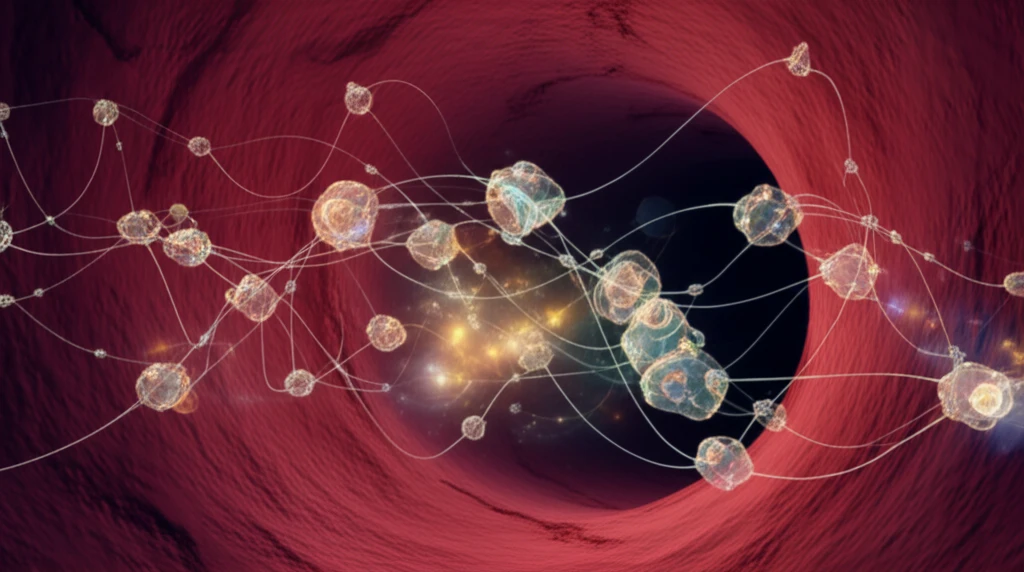
Decoding Your Body's Signals: How Cell Networks Fine-Tune Your Health
"Discover how spatially structured cell populations in blood vessels act as sophisticated communication networks, processing sensory signals to maintain balance in your body."
Imagine a network so vast, it spans the entirety of your cardiovascular system, comprised of trillions of cells. This is the vascular endothelium, a continuous lining of blood vessels that acts as a crucial interface, sensing and responding to a constant barrage of information. It's responsible for controlling everything from blood flow and clotting to vascular permeability and the formation of new blood vessels.
The endothelium faces a monumental task. It must detect and process a multitude of signals simultaneously – hormones, blood composition, immune responses, and even the presence of infections. These signals, often subtle and fluctuating, carry vital information about your physiological state. The endothelium then orchestrates appropriate responses, ensuring your body maintains a stable internal environment.
New research is revealing the sophisticated ways this cellular network manages the flow of information. Scientists are discovering that the endothelium doesn't function as a uniform entity, but rather as a collection of specialized cell clusters, each attuned to specific signals. This discovery is changing our understanding of how the body interprets and reacts to its surroundings.
The Endothelium: A Symphony of Specialized Cell Clusters

Traditionally, the endothelium has been viewed as a homogeneous population of cells, all responding in a similar fashion. However, groundbreaking research is revealing a more complex picture. Scientists at the University of Strathclyde and Durham University have discovered that endothelial cells are organized into spatially distinct clusters, each with unique sensitivities to different chemical signals.
- Specialized Detection: Each cluster is specifically tuned to detect particular signals in the chemical environment.
- Parallel Processing: These clusters operate in parallel, processing different aspects of the environment simultaneously.
- Collaborative Network: Cells within a cluster share information with their neighbors, amplifying and refining the signal.
- Signal Integration: When multiple signals are present, cells perform computations to generate new, distinct signals that are nonlinear combinations of the inputs.
The Future of Vascular Health: Targeting the Cell Network
Understanding the spatially structured nature of the endothelium and its role in processing sensory signals opens up exciting new avenues for treating cardiovascular diseases. By targeting specific cell clusters or manipulating the communication pathways within the network, it may be possible to develop more precise and effective therapies for a range of conditions, from hypertension to atherosclerosis. This research highlights the incredible complexity and adaptability of the human body, offering hope for future innovations in healthcare.
